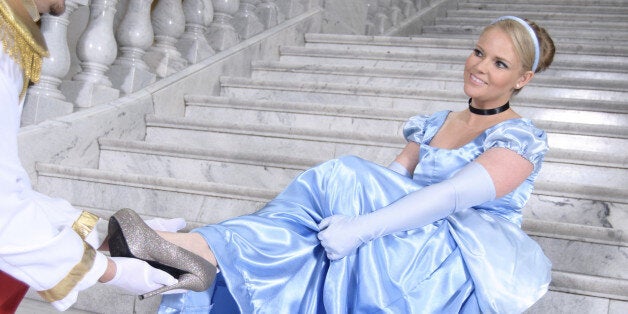
From Snow White washing the dishes to a bunny rabbit police officer in Zootopia, Disney's films and animations have portrayed many memorable working female characters during the past 80 years - the release of Moana promises us yet another.
The prince kissed Snow White and she awoke from her sleep. Cinderella was saved by Prince Charming from a life of abuse. The Little Mermaid's only dream in life was to marry Prince Eric. From the late 1930s to well into the 1980s, leading women in Disney led lives that were only fulfilled upon marrying a prince, and the work they did was housework or being a mother. Any successful working women who did appear in these earlier movies were portrayed as harridans - just think of Cruella de Vil and what she wanted to do to those poor little puppies. In recent movies, however, these messages about women's work have been replaced by active, agentive girls and women, from Mulan to Tiana or Elsa and Anna, who take their destiny into their own hands and who conquer their dreams thanks to their own will and determination. Strength rather than weakness has become desirable and Disney movies now show us that girls cannot be women if they are not visible and active in organisations.
In other words, while they are always entertaining, Disney is not just about entertainment. As Walt himself put it: 'Movies can and do have tremendous influence in shaping young lives in the realm of entertainment towards the ideals and objectives of normal adulthood.' My own research (conducted with Martyn Griffin at the University of Leeds and Nancy Harding at the University of Bradford) suggests that Disney may well be helping to shape young girls' expectations about their future working lives, as the films show them what to expect as adults in the work place.
While early films portray girls as weak and seeking to avoid work (at least, anything other than housework), later ones present strong, women and girls who are explicitly positive role models for girls to seek more prestigious kinds of working lives. Indeed, elements of the latest films can be seen as progressive, even perhaps explicitly "feminist." So, for example, they have stopped portraying female villains, opting instead for a wise mother-figure who mentors the younger woman, and thereby emphasising the benefits of female co-operation. Maleficient is the paramount of this "revisionist fairy tale slate": far from being an evil witch, in the 2014 film we discover someone that after a brutally traumatic rape, which is alluded to, is able to find happiness through her love for the young daughter of her rapist. Maleficient and Aurora join forces and together stop the male tyranny, proving that females working together can accomplish even the most difficult of tasks.
Moana, Disney's 56th classic animated feature (released on December 2nd 2016 in the UK), draws on Polynesian mythology to provide us with a young girl - the only daughter of the chief of an island - who discovers that her people's history as ocean navigators has been hidden. She sets out on an epic adventure to seek out a fabled island and utilises her navigational talents in dangerous waters with the help and support of a demi-god, Māui. It is too early to tell yet whether Moana will offer another empowering representation of a woman 'at work' - although the signs certainly point towards this possibility. It seems that Disney, once so famous for offering demure but essentially weak representations of women at work, will add yet again to its steadily growing body of strong female characters.
Still, even the latest animations are not always entirely or unambiguously progressive. After all, Moana has already attracted controversy for the way it allegedly represents Polynesian people. And in terms of work, even Elsa in Frozen suggests debatable ideas about the continuing importance of appearance for working women. While she learns to control her powers and becomes a strong leader for her people, she is also transformed into a beautiful, seductive woman. She may be freed from her fears, but she is not freed from the imposition of rules about how a woman should look. Women may now be encouraged to take the lead, but, Disney reminds us, even today, that women still need to observe the norms that govern gender.
It is hard, therefore, to be entirely optimistic about the positive effects of any feminist turn in the latest Disney animations, not least because children typically watch early animations alongside contemporary ones. For this reason it is likely that, overall, Disney provides girls (and boys) with mixed messages about the nature of work - and the place of women within it. These mixed messages are very powerful. Especially when taken alongside other similar cultural influences, what Disney films suggest about the nature of women's working lives could well, at least in part, help to explain why many women still have different expectations about work compared to men, and why they have tended not to progress as quickly in workplace hierarchies.
Written by Mark Learmonth, expert in organisation studies at Durham University Business School
